The Island, the most recent book by Robert Darch, is something of a paradox. It is at once bleak, but at the same time uplifting, perhaps in the way that Bach’s melancholic Cello Suite No.1 resonates with the deepest emotions whilst retaining an essential optimism.
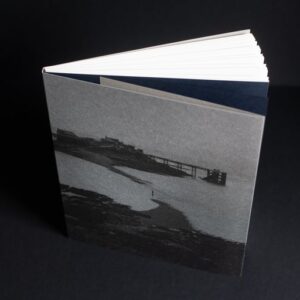
Darch opens his book with a foreword revealed in the front fold; a personal narrative telling of adolescent experience in a rural part of the West Midlands. Many stay, as this is the extent of their existence, but the narrator wants to leave and experience the world beyond ‘Little England’. It gives one the impression of hopelessness. It’s not so much the effects of time that I feel in Darch’s prose, because time itself does not cause neglect, it’s the miserable outcomes of lack of choice, and frustration. It’s interesting that Darch chooses to use the lyrics of an American punk band to enhance his prose. Waiting Room by Fugazi describes a desperate need to be included and not left behind. Where Bach is melancholic, the Fugazi song is angry, edgy, and wants you to know it. That’s the thing about anger; it can be brooding, it can be quiet, it can present as melancholy, or yearning for something, but it’s still anger.
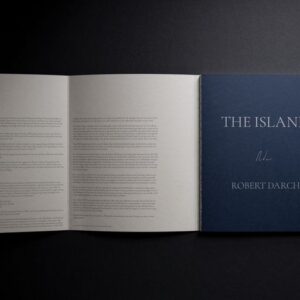
Darch reveals the source of his lament on the second page of his book via the simplicity of a date in silver font against a funereal blue: 26. 06. 2016. This is the date of the announcement of the outcome of the referendum to determine whether the UK remains in, or leaves the EU. Darch’s emotional response to the ‘leave’ outcome is, I think, palpable.
Whilst the intent here is political, this is most definitely a photographer’s book. Even the page size (294 x 240) is about as close as you can get to the photographic format of 5 x 4, which is the ratio that the work is made and presented in. The photographs themselves continue a strong photographic tradition of dynamic monochrome images, documentary by nature, but quiet and melancholic in execution.
The offset printing is excellent, giving the impression of work made by ‘traditional’ analogue means in a darkroom (though I believe the work has been made using a digital camera and editing).
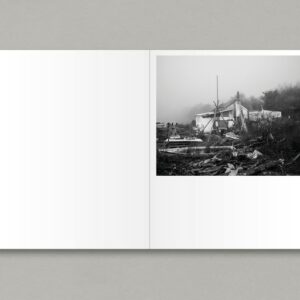
The physical making of the book is thoroughly thought through. There are three papers used. A grey medium-weight card wraps the book with an ethereal view of a photograph of an industrialised estuary with a small and vulnerable land bridge upon which a lonely figure walks. The silvery finish nods to the origins of photography coinciding as it does with the end of the height of industrialisation and imperialism. There is an inner fold at the front, which opens to reveal the foreword. The first two pages are a medium weight sombre blue card, the first carrying the name of the book and artist, and the second, the afore mentioned date. The photographs appear on a warm white and smooth paper, weighty enough to facilitate the excellent printing, presenting the images in a timeless way. The binding is an exposed dark stitch obscured by the wraparound cover, and revealed once the book is open. It is protected with a thin clear layer which I’m assuming is a PVA composite. It really gives the book the feel of being a crafted, tactile object. The exposed binding allows pages to be folded almost flat (always a good call with a book like this) and being exposed provides an obvious metaphor for seeing things as they really are – and I think this is the point – this is a very honest book; we are invited to see behind it both physically and metaphorically. The whole approach is very clever, and very classy.
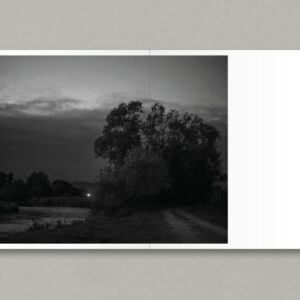
Darch’s thoughtful photographs are a mixture of landscapes, landscapes with people, documentary portraiture and found examples of decay. We come across misty beleaguered vistas, a shack cum cottage so surrounded by detritus that in its derelict state it may or may not be occupied. The images speak of neglect, waste, loss, loneliness; somewhere that has been left behind. Headlights in the distance, a train winding its way through a rural landscape; the humdrum stuff of everyday life. Some of the images are straight out of the horror house vernacular of the Hammer variety. Dead trees figure alongside hauntingly beautiful portraits which are exclusively of young people; fear and worry are obvious in their faces and in one case are evidenced by a single tear, subtle and uncontrived. And the ever present sea, a reminder of what defines this little island and also separates it from its neighbours, leaving it alone, bitter and neglected. The final image is of a severely pollarded tree. It is a brutal image and a fitting epitaph.
Sequencing images is a dark art; with The Island, the outcomes are as dark as the process. The images build a narrative, and we should be worried by the unfolding story. We should reflect that the young people featured in the broken landscapes have been forgotten. We should reflect that the decision to leave the EU was driven by people whose agenda didn’t include the best outcomes for ordinary youth, or the communities in which they live.
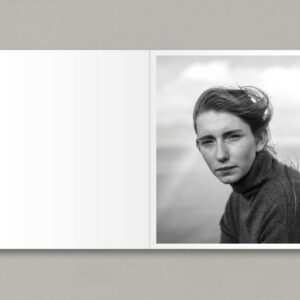
There are a few books by artists addressing similar themes to The Island, and more are appearing (Closed by Martin Amis is a very recent example). The combination of passion, insight, photography, design, printing, and manufacture, executed so cleverly, makes The Island a deeply thoughtful work.
Ultimately, where there is beauty (and there’s plenty of it here) there is optimism. Darch, along with designer Tom Booth Woodger, has taken a very depressing subject and made a truly beautiful book.
Just how wonderful is that?
Robert Darch The Island, LIDO Books, 2022, costs a remarkable £28 plus postage and packing, and is available from his website here: https://www.robertdarch.com/
Book photographs courtesy of Robert Darch.